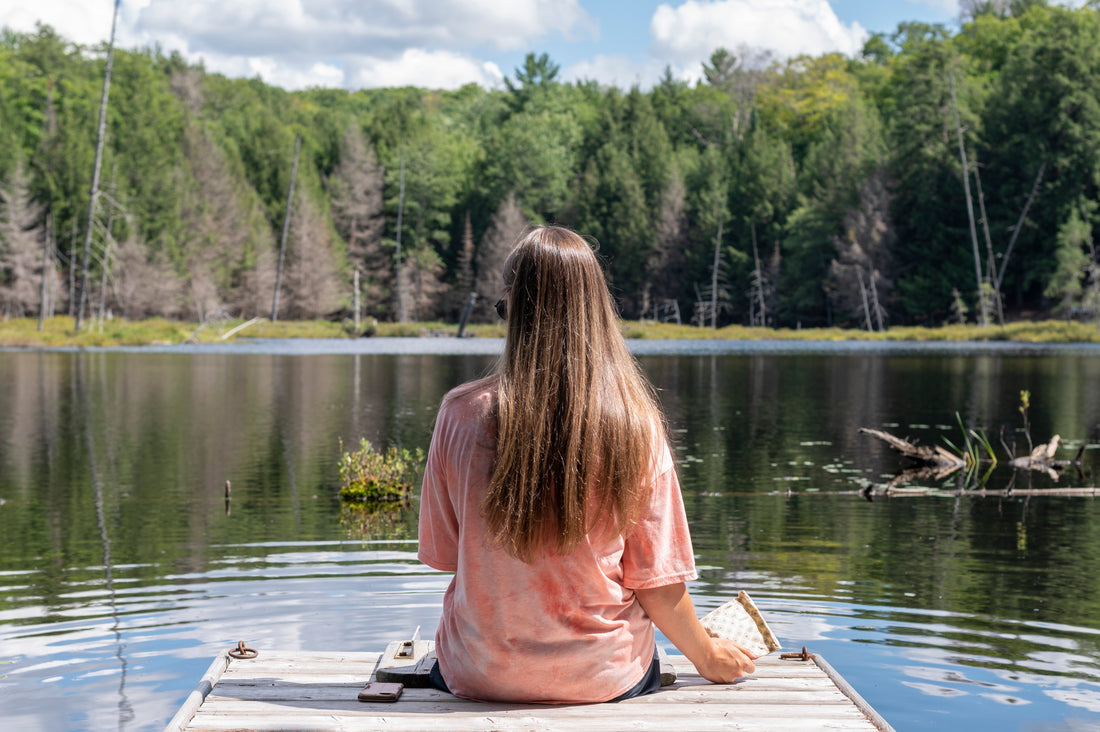
Save The World One Beeswax Wrap Food Bag At A Time.
Each year, we make and use 300 million tons of plastic worldwide. About half of it is created for single use. To make matters worse, 91% of that plastic does not get recycled.
What is single-use plastic? Think grocery bags, produce wrappers, and the sandwich or snack bags we use in our to-go lunches. All of these plastic products are designed for one-time quick convenience rather than sustainable use.
Want to cut down on your contribution to the single-use plastic industry? Consider replacing your plastic products with the beeswax wrap food bag.
What are beeswax wrap food bags, how do they work, and what’s the real benefit of using them? Read on, friend!
What Is a Beeswax Wrap Food Bag?
Beeswax wrap food bags like the ones we sell here at BeeBAGZ are part of the zero-waste movement. Their purpose is simple: to replace single-use sandwich and snack bags in lunches. But reusable bags made of beeswax go an extra (special) step beyond replacing plastic baggies: they keep fruits and veggies fresher for longer in the fridge. That’s right—they extend the life of your produce, keeping healthy snacks crisp and fresh.
BeeBAGZ are designed with natural materials and can be used over and over again. At the end of their life cycle (about a year) you can feel good about tossing them out because they will naturally biodegrade.
BeeBAGZ are made of cotton, jojoba oil, resin, and beeswax. We are proud to say that our hive created the first 100% plastic-free beeswax wrap food bag.
How to Use and Take Care of Your Beeswax Wrap Food Bags
To use your BeeBAGZ, place food items in the bag and pinch the edges together. Your fingers will warm the beeswax, creating a natural seal. Once the bags are sealed, they're suitable for lunch boxes, purses, backpacks, camp coolers, and the fridge.
Beeswax has natural antibacterial properties that protect against germs. BeeBAGZ baggies work hard for you, your produce, and the health of your kitchen. Cleaning your beeswax bag is as simple as using it: rinse it with cool water and wipe it down with a soft cloth or use a mild detergent and rinse if required. Then, set it on your dish drying rack to air dry. Why no heavy scrubbing? Beeswax is a naturally antibacterial material as well as an odor repellent and keeps your bags germ- and smell-free!
Why Ditch the Plastic?
While sandwich and snack bags may not seem like they would make a huge impact, the truth is that every piece of single-use plastic makes a negative difference. That means that every reusable replacement contributes positively to the planet.
What's so bad about single-use plastic? Let's take a look.
Plastic Clogs Our Oceans
There is no way to pinpoint the exact amount of plastic that ends up in our oceans. Scientists predict that it's about 8 million metric tons per year. Single-use plastic food wrappers make the list of top ten pollutants found in the earth’s water bodies.
What happens to all that plastic?
One of the biggest problems is that plastic is incredibly disruptive to marine habitats. Plastic doesn't decompose, which means it becomes more and more concentrated in our oceans over time. In turn, it smothers or breaks important elements of natural habitats like coral reefs, displacing and killing thousands of species.
Sadly, fish, turtles, and seabirds ingest it. This can lead to intestinal blockages, starvation, and death. Earth's natural life circle is delicate—losing one species creates a ripple effect that can even harm humans.
Plastic Contributes to Greenhouse Gases
Oceans are the largest natural carbon sink for greenhouse gases. Without pollution, oceans slow the effects of climate change by absorbing greenhouse gases from our atmosphere.
Plastic not only makes the ocean's job harder but it actively contributes to the increase of greenhouse gases in the air. As the sun heats up plastic on the surface of the ocean, powerful greenhouses gases are released. Temperatures become more extreme with warmer cold seasons and hotter warm seasons. The hotter it is, the more greenhouse gases are released from plastic pollution. In other words, it’s a dangerous cycle.
The Oil Problem
We use about 10% of our oil supply to create plastic products every year. This may not sound like much, but the truth is that we're running out of our known oil supply. In fact, if we continue using oil at the rate we do today, we could run out of oil within the next 53 years.
It is imperative that we find more sustainable energy sources. Currently, we rely more on oil than many people realize. It powers our cars but it also powers our heat and electricity and appears in just about every synthetic product we use every day.
Plastic contaminates air, land, and sea at a molecular level
Microplastics affect humans on a smaller level, where we can’t see them. Studies indicated that over half the population is affected at a cellular level (cancer, infertility) because we ingest micro-sized plastic residues in the food we eat, absorb them with the clothes we wear, and inhale them out of the air—scary!
Save the World with BeeBAGZ
Are you ready to ditch single-use plastic and seek out plastic alternatives? BeeBAGZ is here to help, one beeswax wrap food bag at a time!
Do you have questions about our products or methods? Do you want more information about an existing order? Contact us today and we'll get back to you as soon as possible!